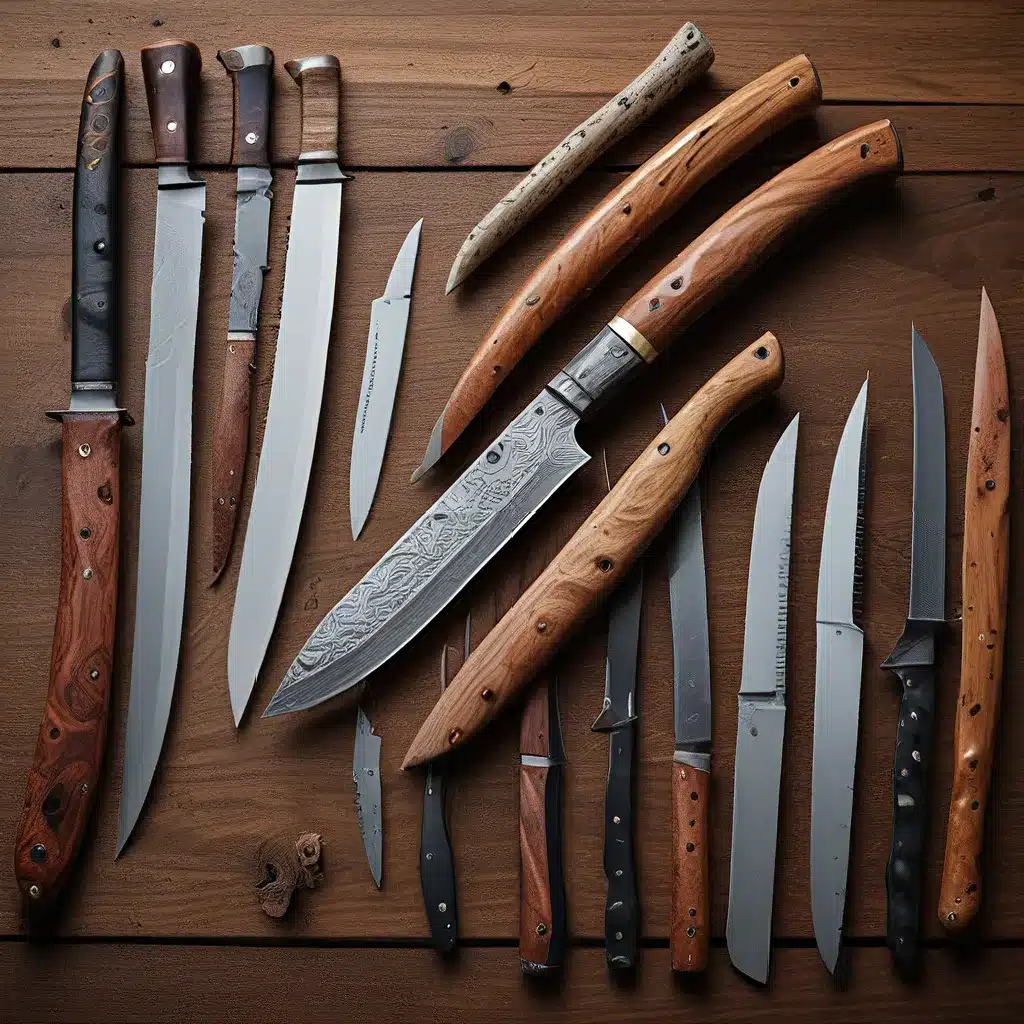
The Enduring Allure of Forged Blades
As a passionate knife enthusiast, I’ve always been captivated by the American Bladesmith Society (ABS) and their mission to preserve the ancient craft of forged knives. These master bladesmiths represent the cutting edge of blade performance and design, constantly pushing the boundaries of what’s possible with a forged blade.
One of the hallmarks of an ABS-certified knife is the distinctive “ABS style forged blade” – a blade design that features a recessed ricasso and a protruding blade edge. This unique profile is achieved through a meticulous forging process, where the bladesmiths carefully “pinch” the steel to create the desired shape.
But as I delved deeper into the world of knifemaking, I found myself grappling with some of the intricacies and debates surrounding this revered blade style. “Is the ABS style forged blade truly superior to other blade designs?” I wondered, and “Are there any other hidden characteristics that are favored in ABS presentation tests?”
The Art of Pinching and Forging
The forging process is at the heart of creating an ABS-style blade. As the ABS master bladesmiths have described, the key lies in the technique of “pinching” the steel.
According to the ABS guidelines, the process involves laying the steel flat on the anvil, with the edge of the anvil positioned beneath the spot where the bladesmiths want to “pinch” the steel. By striking the steel with the hammer, they can cause the choil area of the edge to drop down, forming the rear of the edge bevels without deforming the ricasso.
This precision forging technique is what gives the ABS-style blade its distinctive recessed ricasso and protruding edge. The bladesmiths must be incredibly consistent in their forging, ensuring that both sides of the blade are forged evenly to prevent warping during the hardening process.
The Ongoing Debate: Function vs. Form
As I delved deeper into the world of knifemaking, I came across some fascinating discussions and differing opinions on the merits of the ABS-style forged blade. Some experts believe that the recessed ricasso and protruding edge are not just aesthetically pleasing, but also enhance the functionality and performance of the knife.
According to one knife enthusiast, the ABS-style blade is a “keynote” that distinguishes forged blades from those produced by stock removal methods. The protruding edge, they argue, can provide improved cutting performance and better control for the user.
However, not everyone is convinced. Some experts have expressed the view that the ABS-style blade is actually “an inferior edge” that is “less functional” than a non-protruding edge that is in line with the ricasso. They argue that the distinctive profile may be more about aesthetics and tradition than pure functionality.
Navigating the Complexities of Blade Design
As I ponder these divergent perspectives, I can’t help but wonder about the nuances and complexities that go into designing the ultimate high-performance cutting tool. While the ABS-style forged blade has undoubtedly become a hallmark of master bladesmithing, it’s clear that there are valid arguments on both sides of the debate.
Perhaps the true art of knifemaking lies not just in the technical mastery of forging, but also in the ability to balance form and function – to create a blade that not only looks stunning, but also delivers exceptional cutting performance in the hands of the user.
Embracing the Evolving Landscape of Knifemaking
As I continue to explore the world of knifemaking, I’m struck by the ongoing research and debate surrounding blade design and performance. It’s a field that seems to be constantly evolving, with new techniques, materials, and perspectives constantly challenging the status quo.
And that’s what makes it so fascinating to me. The art of knifemaking is not a static pursuit, but a dynamic and ever-changing landscape – one that requires a delicate balance of tradition, innovation, and a deep understanding of the nuances of blade design.
Whether it’s the ABS-style forged blade or some other cutting-edge innovation, I’m excited to see where the future of knifemaking will take us. There’s always more to learn, more to discover, and more to explore in this captivating world of blades and the skilled artisans who craft them.


